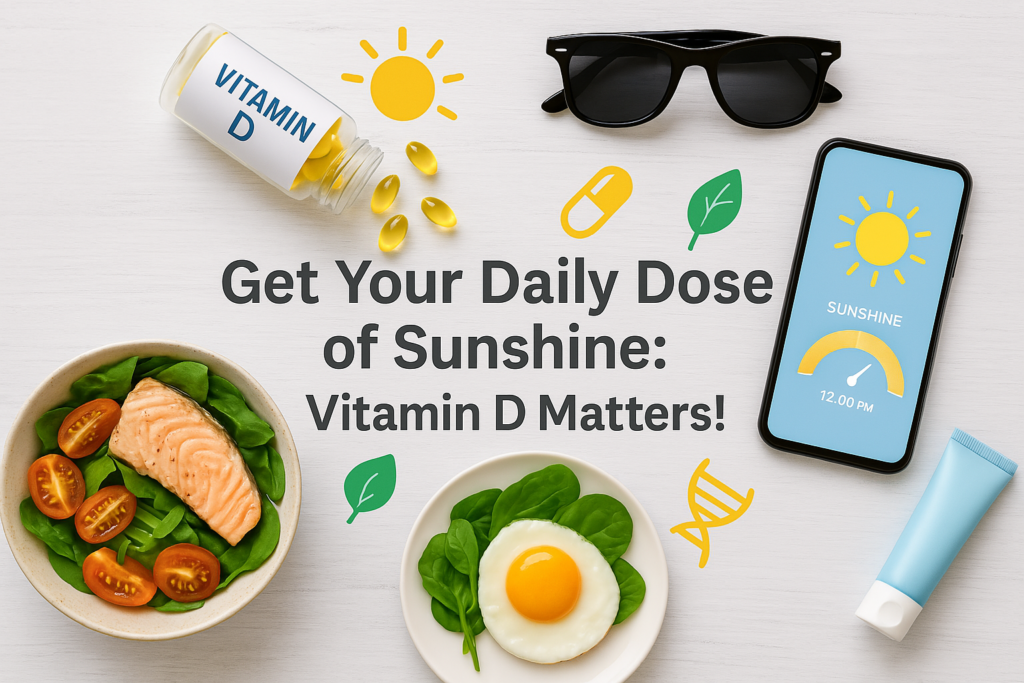🚨 Trending Health Alert
⚠️ Alarming Increase in Vitamin D Deficiency Among U.S. Adults and Teens.
A recent study published in the Journal of Clinical Endocrinology & Metabolism has found that over 40% of U.S. adults are now deficient in Vitamin D, with rates climbing even higher during the colder months.
What’s more concerning? Teenagers and adults over 60 are the most affected. Contributing factors include limited sun exposure, overuse of sunscreen, and a diet low in Vitamin D-rich foods like fatty fish, egg yolks, and fortified milk.
“We’re seeing more patients with fatigue, bone aches, and mood issues linked directly to low Vitamin D levels,” said Dr. Alicia Morgan, an endocrinologist at Johns Hopkins.
Low Vitamin D is now being connected to more than just bone health:
- Increased risk of respiratory infections
- Weakened immune function
- Higher likelihood of depression and anxiety
What You Can Do:
- Get your Vitamin D levels tested, especially if you live in northern states or spend most of your day indoors.
- Consider supplementation (but always consult your healthcare provider first).
💡 Wellness Tip: Soak Up the Right Kind of Sunlight
Don’t ditch the sunscreen altogether — but a balanced sun exposure routine can work wonders for your Vitamin D levels.
Here’s how:
🌞 Aim for 10–20 minutes of direct sunlight daily on bare skin (like arms or legs) between 10 a.m. and 3 p.m.
✅ If you’re darker-skinned, you may need closer to 30 minutes to synthesize enough Vitamin D naturally.
🏥 Still worried about skin cancer? Just avoid sunburns and cover up or apply SPF after your brief sun session.
🔷 Pro Tip: Use a UV index app (like D Minder or QSun) to find the best time to safely get sunlight based on your location.
Other ways to sneak Vitamin D into your day:
- Eat more fatty fish like salmon, sardines, or tuna
- Drink fortified dairy or plant-based milk
- Try a Vitamin D3 supplement (recommended daily dosage: 600–800 IU for adults, unless otherwise advised)
🧠 Fun Fact
Did you know? Vitamin D is not actually a vitamin — it’s a prohormone! That means your body can produce it when triggered by UVB rays from the sun.
Unlike other vitamins you must get from food, your skin makes Vitamin D naturally when exposed to sunlight — how cool is that?
Bonus: It’s also been called the “sunshine hormone” for its mood-lifting abilities ☀️😊
🔗 Useful Resource
- NIH Fact Sheet on Vitamin D
- Learn the signs of deficiency, recommended dosages, and best food sources: https://ods.od.nih.gov/factsheets/VitaminD-Consumer/
- CDC Guide to Sun Safety and Vitamin D
- Find a safe balance between sun exposure and skin protection: https://www.cdc.gov/nutrition/data-statistics/know-your-limit-for-vitamin-d.html
📣 Call to Action
Let’s make sure everyone gets their daily dose of sunshine — responsibly!
Here’s how you can take action:
📅 Subscribe to the DrMedHealth Newsletter for daily health tips and updates.
🕊️ Follow us on X (Twitter) @DrMedHealth to stay informed about new research and alerts.
💬 Comment below: Have you ever had your Vitamin D levels checked? What changes did you notice when supplementing?
🔗 Share this post with family and friends — especially those who live in colder or low-sunlight areas.









